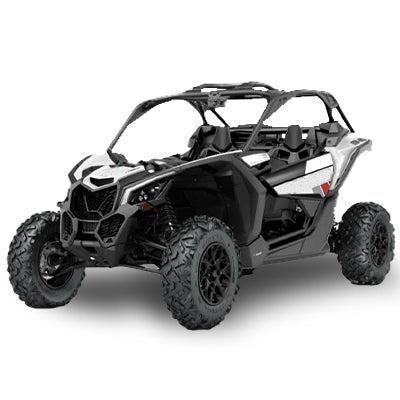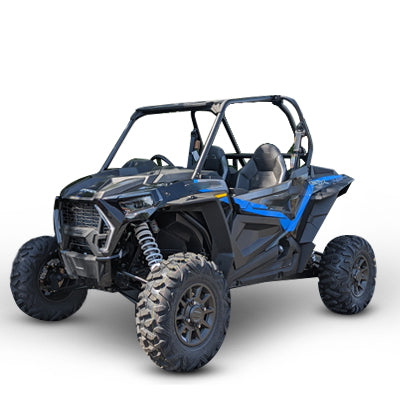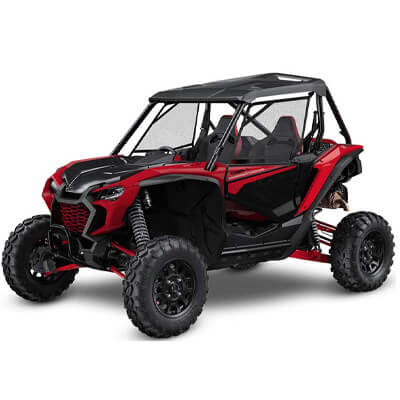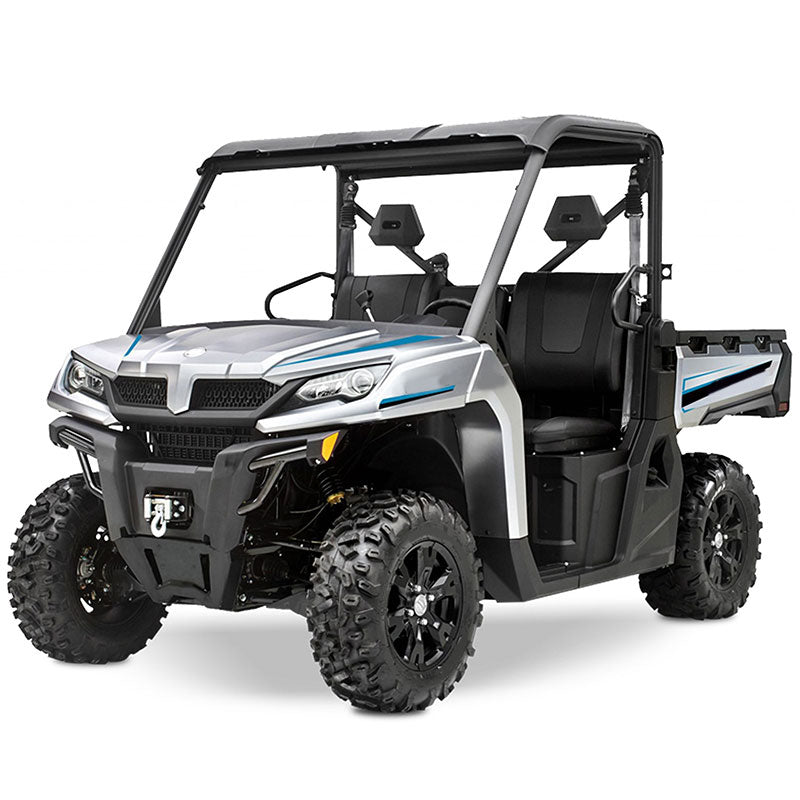UTV Price Comparison Guide

UTVs aren’t nearly as expensive as most assume. Price the market, and you’ll find some off-road vehicles go for as little as $3,000 to $4,000. The upper end of the price spectrum tops out around $150,000 to $200,000.
Most UTVs are priced between the two extremes. As detailed below, some UTV brands are economical, while others have bells and whistles for a more enjoyable yet costlier driving experience.
This guide is your inside look at UTV pricing as the market currently stands.
Key Factors That Influence UTV Prices
Horsepower is important, yet it’s merely one of many variables that influence UTV price tags.
Brand name isn’t the only factor that influences UTV pricing. The vehicle’s features and accessories are also key price determinants. The idiosyncratic nuances of individual models, including their distinct specifications, all play a part in the list price.
Some UTVs are jam-packed with parts and accessories along with other niceties that enhance both ride quality and aesthetics. Others are more minimalist, providing an economical approach to joyriding.
If cost is your primary concern, it may be wise to consider options beyond the cheapest new UTVs on the market.
Take your time, expanding your consideration to used UTVs.
New UTVs
Buy a brand new UTV, and the cost will primarily hinge on the brand reputation and model specification. The industry’s top brands, such as Polaris, Honda, and Can-Am, tend to be priced higher than lesser-known brands.
The higher price is often worth it considering elite brands’ track record of success. Top-tier UTV brands are often built with parts of superior quality and longevity.
Be mindful of added accessories, as an excess of bells and whistles will hike the price. Accessory-laden recreational UTVs and those designed for work have the potential to add up quickly.
Storage compartments/spaces, winches, and even the addition of specialized bumpers often cost a pretty penny.
Used UTVs
Check out the pre-owned UTV market and you’ll find the prices vary according to a wide array of factors:
- Mileage
- History of servicing (or lack thereof)
- Repair history
- General vehicle condition
- Engine power
Purchase a used UTV, and you’ll save money without necessarily sacrificing the bells and whistles. Plenty of used UTVs have similar or even superior features and accessories compared to affordable new UTVs.
As is often said, if there is a will, there is a way. Do your homework, conduct market research, and search through the listings. You’ll eventually find a feature-laden UTV at a reasonable price.
The best part is used UTVs are immediately available, meaning you won’t have to wait for one to roll off the assembly line and be delivered.
The Downside of Pre-owned UTVs
The primary drawback to buying a used UTV is the higher likelihood of repairs and maintenance. Moreover, used UTVs tend to lack a warranty. Buy a used UTV without a warranty, and costly repairs might arise outside of the expired coverage period.
When in doubt, have the pre-owned UTV you are considering inspected by a mechanic. If this professional’s analysis gives you second thoughts, choose a different model or buy new.
Price Ranges Explained
Peruse the market, and you’ll find UTVs typically are grouped into specific price ranges, one of which will fit your unique budget.
UTVs fall into three general price ranges:
- Entry-level
- Mid-range
- High-end
If you are a newbie to the UTV world or hesitant to plunk down $10,000 to $20,000 or more, consider entry-level options. Entry-level UTVs are optimal for inexperienced riders and those looking for lighthearted fun on the trails without a sizeable investment.
Entry-Level UTVs
Entry-level UTVs tend to be smaller and slower than those in the mid and upper price ranges. These “newbie” UTVs have small engines, slower acceleration times, fewer bells and whistles, and less aesthetic appeal.
In short, entry-level UTVs are basic vehicles without added features for luxury and thrills.
Mid-Range UTVs
Mid-range UTVs are a bit more expensive yet also tend to provide better performance. These UTVs are the happy medium between low-cost UTVs and those at the upper end of the price spectrum.
In general, mid-range UTVs tend to cost between $10,000 and $15,000.
Choose a mid-range UTV and you’ll likely find it provides utility with a balance of function and form. Most mid-range UTVs are quite reliable, providing adequate performance, albeit without the top-end features more experienced UTV lovers crave.
High-End UTVs
Go all out with your new UTV, buying from an industry leader such as Kawasaki, Can-Am, or Polaris, and you’ll pay more for the elite driving experience.

The higher price is often worth it, as the industry’s top brands have superior reputations and value.
Peruse the upper end of the UTV market, and you’ll find vehicles with niceties including:
- Spacious cargo boxes
- Sound systems
- Enclosed cabin
- Air conditioning
- Underbed storage
- Flashy aesthetics
The most expensive UTVs top out around $150,000 to $200,000.
|
Category |
Price Range |
Examples |
Description |
|
Entry-Level |
$3,000 $10,000 |
Honda Pioneer 500, CFMOTO ZForce 500 Trail, Kawasaki Mule SX |
Bare bones functionality. Less powerful engine. Few bells and whistles. Low ground clearance, wheelbase and displacement. |
|
Mid-Range |
$10,000 $15,000 |
CFMOTO UForce 600, CFMOTO ZForce 950 Sport, Polaris Ranger 1000, Honda Pioneer 500 |
Affordable and balanced. Sufficient features. Moderate ground clearance, wheelbase and displacement. |
|
High-End |
$15,000 $150,000+ |
Can-Am Defender Max Lone Star Cab HD10, Polaris RZR Pro R, Yamaha Wolverine X2 850 R-Spec |
The industry’s latest technology and elite performance. Greater ground clearance, wheelbase and displacement. |
|
Used |
$5,000 $15,000 |
All models are available used |
Affordable yet pose a greater risk of frequent repairs and maintenance. |
Additional Costs to Consider
There’s more to UTV ownership costs than the listed price.
The listed price of the UTV isn’t always indicative of the total cost. In some cases, there is a delivery cost, especially if the UTV you have in mind isn’t available at a local dealership. There will likely be an added charge if the UTV is to be transported to your local dealer from in-state or out-of-state.
Additional costs include:
- Insurance
- Taxes
- Fuel
- Repairs
- Ongoing maintenance
New oil and tires will also be necessary as time progresses. An oil change is required every 40 to 50 hours of ride time.
Tips & Conclusion
Shop wisely and you’ll eventually find the perfect new UTV for your needs.
Do your due diligence when shopping for a new or used UTV. The right make and model at your preferred price range is out there.
Be patient, explore all avenues and don’t pull the trigger until you are completely comfortable. The UTV you have your eye on should meet most, if not all, of your requirements.
FAQs
Q1: How much are new UTVs?
A1: UTVs can be bought for as little as a couple thousand dollars. The cream of the crop costs six figures or more. Most UTV owners pay an amount in between these extremes, typically in the range of $5,000 to $15,000.
Q2: Are used UTVs really worth the risk?
A2: In general, used UTVs are worthwhile. However, their repair and maintenance costs have the potential to accumulate over time. If price is your primary consideration, give serious consideration to a pre-owned vehicle.
Q3: What are some examples of the features and accessories available on the most expensive UTVs?
A3: The UTVs at the upper end of the price spectrum have 8” speakers, elite all-terrain tires, sizeable cargo compartments, high ground clearance, and 220+ horsepower. Some of the high-end models rival small pickup trucks featuring enclosed cabins with air conditioning.
Q4: What should I look for when comparing UTVs in my preferred price range?
A4: Focus on balance. The best UTVs at all price ranges balance horsepower with features, accessories, cargo space, and technology.











Leave a comment